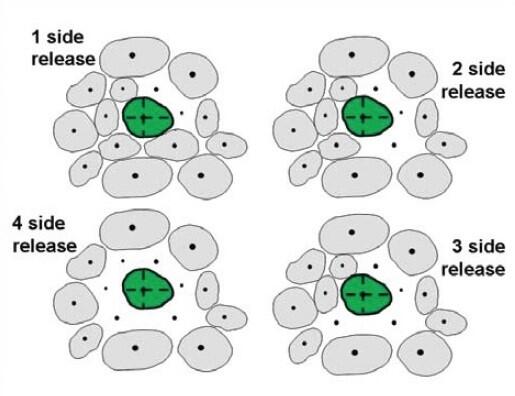Fall is a great time to be out in the forest. The vibrant colors of summer songbirds, all but gone now to spend the winter in the tropics, replaced by fall foliage. Along with cooler temperatures, autumn is ideal for planning forest stewardship activities. One of these activities that can help enhance bird habitat and improve the overall health and resilience of the forest is the application of a silvicultural method called Crop Tree Release with Canopy Gap Formation.
Silviculture is the art and science of tending forest trees. Effectively applied, silviculture plays a role in directing forest establishment, its composition of species, and its growth to help create and maintain a forest that meet stewardship objectives; whether that be wildlife habitat, forest products, recreation, etc.
Crop tree release focuses on retaining and continuing to grow the best formed, healthiest, and otherwise most desirable trees in the forest by harvesting surrounding trees that are competing for resources. Once the crop trees are selected, some of the trees competing with the crop tree for light and space are removed. In addition to releasing crop trees, the creation of small openings in the forest canopy, referred to as gaps, can help improve forest structure by promoting the growth of young trees and shrubs.
| When and where is it used? |
|
| How is it done? |
|
| Why does it work? |
|
| Bird habitat tips |
|
| Birds that may benefit |
|
Our partners at the VT Department of Forests, Parks, and Recreation have put together an excellent video showing the principles of crop tree release in action. Check it out here.
Audubon VT’s “Silviculture with Birds in Mind” provides additional information on the crop tree method and other treatments for integrating timber and songbird habitat management.

Please Note: As with any forest management, we highly recommended that you consult professional foresters when planning for and implementing practices. Ensure training in the proper felling of trees and equipment use prior to taking on any work in the woods yourself.









